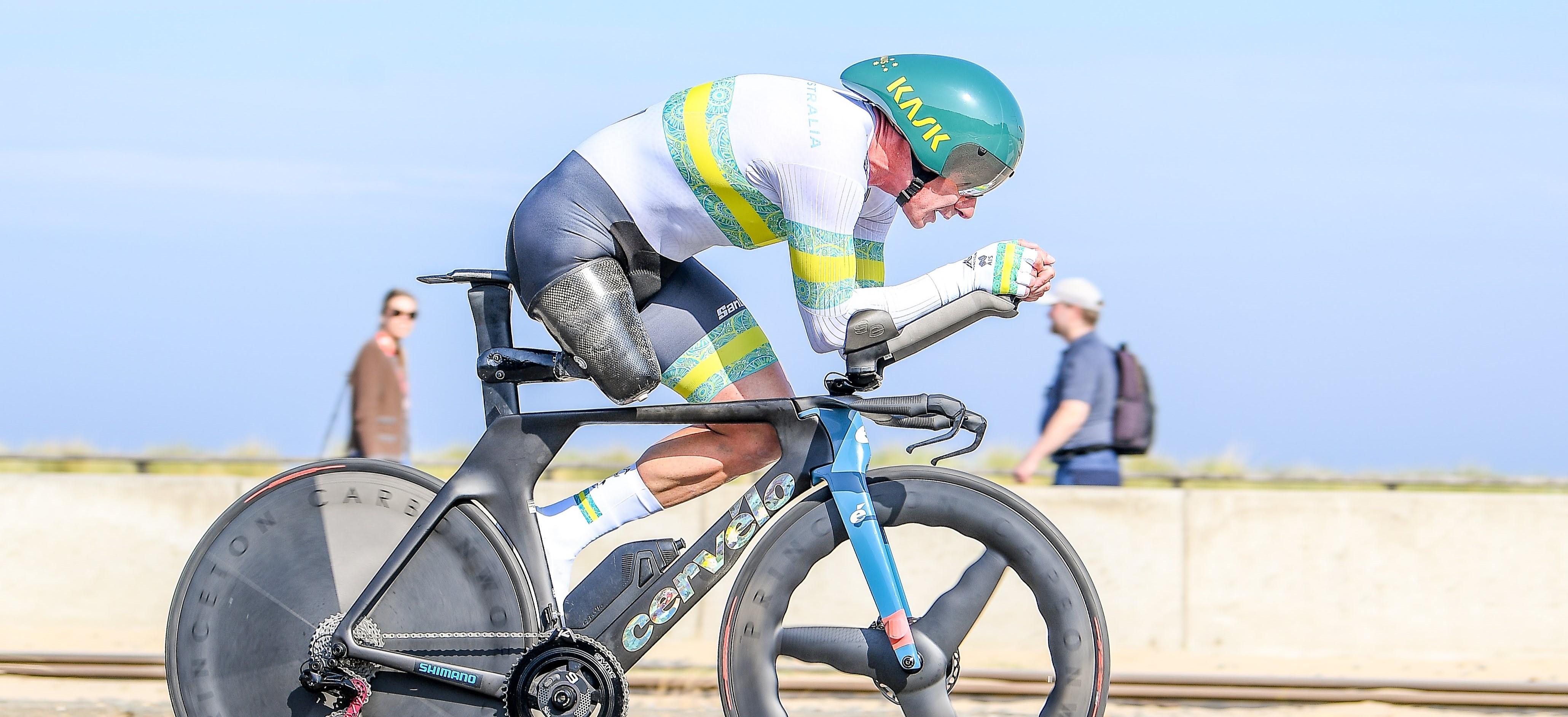All you need to know about classification

The riders are classified based on the functional impact that their disability has on their performance. In other words, the functional abilities of the rider in question are taken into account.
There are a total of four types of bicycles: handbikes (H), tricycles (T), tandems (B) and regular road bikes (C), for both men (M) and women (W). Below is more information about the different classes per bicycle category.
Different classes
B – Tandem
Athletes with partial or complete visual impairment ride a tandem with a pilot. Athletes are classified in B1-3 and compete together in one B class.
C – Bicycle
Athletes are classified in classes C1-5 and ride a standard two-wheeled bicycle that may have modifications to accommodate an athlete's disability.
H - Handcycle
Athletes who are unable to ride a bicycle or tricycle ride a handbike. Athletes classified in H1-4 ride an arm-powered handbike in a reclined position. Athletes classified in the Handcycle class H5 ride an arm- and torso-powered handcycle from a kneeling/sitting position.
T - Tricycle
Athletes in classes T1-2 are unable to ride a two-wheeled bicycle due to a lack of balance and/or severe limitations in pedalling due to a neurological impairment. These athletes ride a tricycle.
The purpose of classification
- To determine whether an athlete is eligible to compete
- To classify athletes for competition based on functional abilities
- To minimise the impact of disability on the outcome of the competition